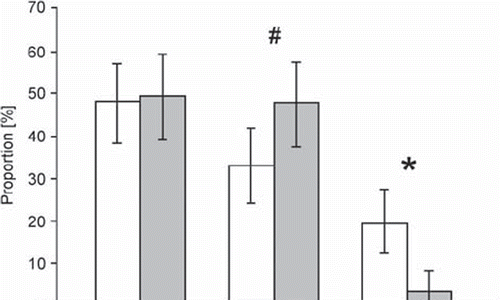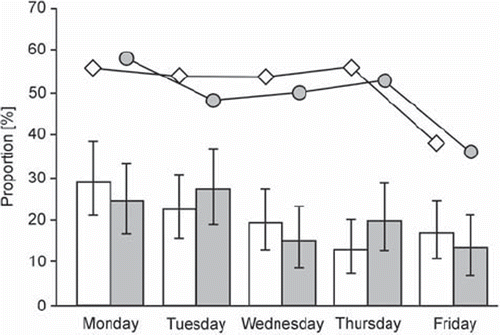Figures & data
Table I. Demographic and clinical characteristic of patients.
Figure 1. Proportions of patients issued with a sickness certificate.
Notes: Data were presented as percentage of cases related to the whole group of working adults with acute cough/LRTI from Poland (white bars, n = 125) and Norway (grey bars, n = 107). Error bars represent the 95% confidence interval (CI). #p < 0.02; *p < 0.03.

Figure 2. Patients’ attendance related to weekdays.
Notes: The percentage of work attendees visiting on different weekdays in Poland (n = 125) and Norway (n = 107) are shown as bars (in white and grey respectively) with 95% confidence interval (CI). The proportions that were sick-listed (n = 65 in Poland and n = 54 in Norway) on the different days are shown as lines.

Table II. Issuing of sickness certification according to patients’ characteristics.
Table III. Predictors of issuing a sickness certificate by GPs.
